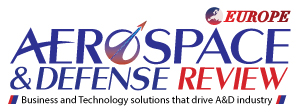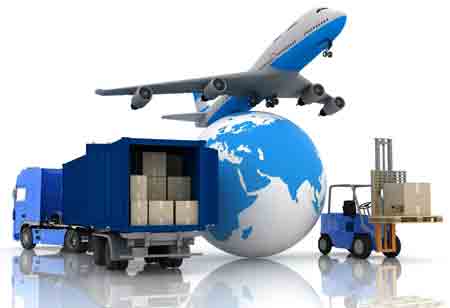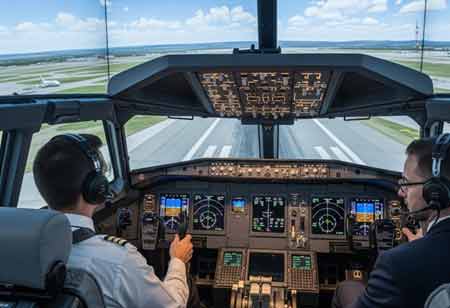FREMONT CA: The aerospace and defence (A&D) industry has long been a cornerstone of global security, technological progress, and exploration. In an era of rapid technological advancement, the sector faces unprecedented challenges and opportunities. From autonomous systems to hypersonics, these advancements will transform how we protect, navigate, and engage with the skies and seas.
ZeroUI: Redefining Human-Machine Interaction
A transformative trend for 2025 is the rise of Zero User Interface (ZeroUI), a paradigm that simplifies human-machine interaction by leveraging voice commands, gestures, and other intuitive controls. By eliminating traditional screens and buttons, ZeroUI enhances operational efficiency, particularly for autonomous systems such as UAVs and Automated Guided Vehicles (AGVs). Beyond control interfaces, ZeroUI will remodel data visualisation and real-time analysis, allowing operators to engage seamlessly with complex systems. This technology promises improved safety, reduced costs, and more natural interactions with advanced systems in training and simulation. ZeroUI is poised to reshape the future of human-machine collaboration in aerospace and defence by replacing traditional interfaces with intuitive, immersive solutions.
Generative AI: Transforming Intelligence and Operations
Generative AI is rapidly emerging as a transformative force within the A&D sector. Already applied in aircraft design, system optimisation, predictive maintenance, and simulations, its potential to transform the industry is immense. By 2025, generative AI will enhance autonomous systems, improve decision-making accuracy, and significantly boost operational efficiency. Its ability to learn, adapt, and generate innovative solutions will drive unprecedented precision and agility, reinforcing the industry's ability to respond to evolving threats and opportunities. As a result, generative AI will play a pivotal role in shaping the future of aerospace and defence operations.
AI and Digital Technologies Reshaping Aircraft Maintenance
The resurgence of air travel has heightened demand for new aircraft, but supply chain disruptions and fleet availability challenges have placed greater emphasis on extending the lifespan of existing aircraft. Maintenance, repair, and overhaul (MRO) services are now at the forefront of this shift, with AI and digital technologies playing a critical role in enhancing efficiency, predictability, and customer satisfaction. By integrating AI-driven predictive analytics and automated diagnostics, MRO operations will optimise maintenance schedules, reduce downtime, and improve fleet performance. As the aviation sector adapts to evolving demands, AI and digital innovations will be instrumental in ensuring operational resilience and long-term sustainability.
Blockchain: Enhancing Security and Transparency
Trust, security, and transparency are paramount in the aerospace and defence industry. Blockchain technology, renowned for its immutable and decentralised architecture, is poised to address these critical requirements. By 2025, blockchain is expected to revolutionise key operations, including secure data exchange, supply chain management, identity verification, and contract execution. Its ability to provide end-to-end traceability and strengthen cybersecurity will be instrumental in safeguarding sensitive information, protecting critical infrastructure, and modernising complex transactions.
Trust is a foundational principle in aerospace and defence, and blockchain will redefine industry standards for transparency and operational integrity. Blockchain technology will transform global aerospace and defence ecosystems by enhancing data security, streamlining regulatory compliance, and mitigating fraud risks.
Hypersonic Technology: Shaping the Future of Aerospace and Defense
Hypersonic technology represents one of the most groundbreaking advancements in the aerospace and defence sector. Capable of reaching speeds exceeding Mach 5, hypersonic vehicles and missiles are set to redefine defence strategies and commercial aerospace applications. Hypersonic weapons offer significant advantages over traditional defence systems in military operations due to their unparalleled speed and manoeuvrability. Meanwhile, advancements in hypersonic travel hold the potential to transform commercial aviation, enabling rapid transportation on a global scale.
By 2025, the widespread adoption of hypersonic technology is expected to drive innovation, reshape geopolitical landscapes, and redefine defensive and logistical frameworks. As research and development efforts accelerate, hypersonic systems will be crucial in advancing next-generation aerospace capabilities, cementing their position as a transformative force in the industry.
Hybrid Electric Aircraft and Industry 4.0: Advancing Sustainable Aviation
The aviation industry is profoundly transforming, driven by the dual imperatives of sustainability and efficiency. As global concerns over climate change and resource consumption escalate, hybrid electric propulsion is emerging as a viable solution to reduce fuel consumption and lower emissions. Initially developed for smaller aircraft, these technologies have the potential to revolutionise air travel by enhancing environmental sustainability and cost efficiency. By integrating electric power with traditional engines, hybrid systems optimise energy utilisation, reduce dependence on fossil fuels, and contribute to a greener aviation ecosystem.
Concurrently, adopting Industry 4.0 technologies is reshaping the aerospace and defence (A&D) sector. Innovations such as digital twins and additive manufacturing (3D printing) are set to enhance operational efficiency and sustainability. Digital twins facilitate real-time monitoring and predictive maintenance across an aircraft’s lifecycle, minimising downtime and improving safety. Meanwhile, additive manufacturing enables the production of lightweight, durable components with reduced lead times, contributing to fuel efficiency and cost savings.
Hybrid electric propulsion and Industry 4.0 technologies are poised to redefine aviation, addressing environmental challenges while enhancing performance and reducing costs. By embracing these advancements, the industry is making significant strides toward a more sustainable and efficient future.
Attracting the Workforce of Tomorrow
The demand for skilled labour in aerospace has surged, surpassing pre-pandemic levels. To meet this challenge, companies are implementing a two-pronged approach. At the national level, competitive compensation and opportunities to work with cutting-edge technologies attract top engineering talent. However, the most significant impact occurs locally, where public-private partnerships foster robust talent ecosystems. Investments in K-12 STEM programs and technical colleges are cultivating a new generation of aerospace professionals, ensuring a steady pipeline of skilled workers. These proactive measures are strategic and essential to maintaining the industry's long-term competitiveness.
Retaining Institutional Knowledge and Fostering Innovation
High turnover rates and an ageing workforce present significant retention challenges. As experienced professionals retire, they take with them decades of institutional expertise. To address this, the industry is leveraging both time-tested and emerging solutions. Apprenticeship programs have tripled, offering hands-on learning opportunities that accelerate skill development. Simultaneously, extended reality (XR) technologies are transforming training, enabling new employees to gain proficiency faster and contribute effectively from the outset.
What sets 2025 apart is the growing influence of digital technologies in workforce planning. AI-powered analytics are helping aerospace companies align workforce capabilities with evolving product demands, ensuring the right talent is in place at the right time. From knowledge transfer initiatives to AI-driven career development platforms, digital tools enhance every facet of the employee experience. This shift is not just about filling vacancies—it is about cultivating a workforce that is agile, innovative, and equipped to meet future challenges.









